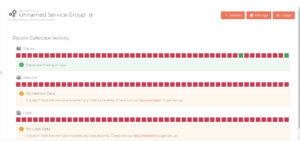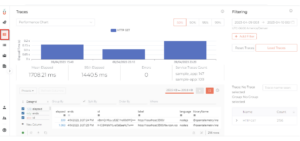TelemetryHub for Predictive Maintenance
Sudden maintenance calls due to unexpected system failures often result in prolonged downtimes and poor client satisfaction. It is particularly unacceptable in real-time systems where a little abruptness in the system can cause a disaster.
Is there any way to predict these potential maintenance calls? Fortunately, yes! TelemetryHub can help implement predictive maintenance approaches. Let’s see how.
What is Predictive Maintenance
Predictive maintenance is a proactive approach to equipment maintenance in which possible breakdowns are forecasted, and repair actions are scheduled accordingly. Predictive maintenance has many advantages, such as less downtime, longer equipment lifespan, and increased safety.
Its goal is to predict when maintenance will be needed, thus avoiding three costly scenarios:
- Immediate maintenance following an equipment malfunction or breakdown
- Downtime of equipment that can lower production returns
- Conducting excessive preventive maintenance, which might consume a lot of technicians’ time and lower productivity
Techniques for Predictive Maintenance of the Applications
There are multiple indicators (e.g., performance and traces) for predicting a potential maintenance call of the applications. Here are a few well-reputed techniques that use these indicators to predict maintenance:
- Predicting maintenance through performance monitoring: Monitoring software health enables maintenance teams to plan proactive maintenance tasks before software breakdowns occur. This method spots possible problems such as abnormal behavior, slow response times, and crashes.
- Predicting maintenance through analyzing historical data: Machine learning techniques examine data from various sources, including logs, traces, and metrics. These algorithms can find trends and irregularities that might point to potential vulnerabilities in the software. Foreseeing potential failures and locating problem areas is possible by analyzing historical data.
- Predicting maintenance through A/B testing: A/B testing involves analyzing the performance of two different software versions. Maintenance teams can find possible performance problems and improve software performance by testing various software versions.
- Predicting maintenance through User feedback: Gathers user evaluations on software. This feedback can be used to identify potential problems and improve software performance.
A system for keeping track of the system’s condition is necessary to execute predictive maintenance. One such system is TelemetryHub, which can be used to gather and analyze data from numerous sources to anticipate system problems before they happen.
Who is TelemetryHub?
TelemetryHub is a cloud-based platform that gives real-time insights into the health of products. It is intended to assist businesses in keeping track of and analyzing the data produced by their systems so they may use it to improve workflow, avoid system breakdowns, and cut maintenance costs.
TelemetryHub is a versatile platform that can be tailored to satisfy the unique requirements of each organization. It has simple setup configurations for numerous popular languages like JavaScript, Python, Go, Java, .NET, PHP, Rust, Ruby, and more. You can have a look at the official documentation for the detailed tutorial.
How Does TelemetryHub Help in the Predictive Maintenance of Applications?
TelemetryHub will make a considerable difference in predictive maintenance. It harnesses real-time data and machine learning to improve how we manage equipment. This innovative technology leads to fewer application downtimes and reduces major maintenance calls, saving costs and increasing efficiency. It’s truly a game-changer for how companies take care of their maintenance tasks!
TelemetryHub gathers information from various sources, including logs, traces, and metrics. The data is sent to the cloud, where machine learning algorithms are used to analyze it and look for trends and abnormalities. These algorithms can forecast possible software faults and pinpoint problem regions.
TelemetryHub traces, logs, and metrics
Traces help monitor the effectiveness of certain transactions and locate bottlenecks. TelemetryHub collects and analyzes traces to identify potential software performance issues. Traces can assist maintenance teams in scheduling maintenance tasks before problems become significant. More on implementing traces can be found here.
Logs help track software behavior and spot problems that need fixing. TelemetryHub gathers and examines logs to find patterns and abnormalities that could point to a future software breakdown. Additionally, logs can be utilized to track individual transactions’ performance and spot bottlenecks that might be influencing the software’s overall performance.
Metrics can help track patterns, spot trends, and foresee possible issues with the software. To find patterns and anomalies that could point to potential software breakdowns, TelemetryHub collects and analyzes metrics. The metrics include key performance indicators (KPIs), including uptime, throughput, and reaction time. These KPIs help identify areas that need potential maintenance.
The following image shows the dashboard screen where all the traces, logs, and metrics are displayed.
Moreover, you can get detailed charts and details of any particular traces. The following image shows the traces screen of TelemetryHub.
TelemetryHub also delivers real-time warnings and notifications when software health is compromised, allowing maintenance teams to respond swiftly to possible concerns. The platform also includes a dashboard that offers a comprehensive picture of software health, including historical trends and forward-looking information.
Benefits of TelemetryHub for Predictive Maintenance of Applications
TelemetryHub provides various advantages to organizations that use predictive maintenance on applications, including:
Increased software uptime: TelemetryHub allows businesses to keep an eye on the health of their software in real-time, allowing them to see possible problems before they cause downtime. Ensuring that software continuously operates at peak performance lowers the possibility of unplanned downtime.
Increased software lifespan: TelemetryHub can assist organizations in scheduling maintenance tasks at the appropriate times to extend software longevity and decrease the need for premature replacements by spotting possible issues early.
Reduced maintenance costs: Predictive maintenance allows organizations to schedule maintenance activities at the ideal moment, reducing the need for emergency repairs and minimizing maintenance’s impact on production schedules.
Improved software performance: Predictive maintenance enables organizations to proactively optimize software performance by identifying potential performance issues early.
TelemetryHub for Equipment Maintenance
TelemetryHub is an effective framework for implementing predictive maintenance of applications. By providing real-time health and performance insights into the applications, TelemetryHub helps businesses improve operations, avoid downtime, and cut maintenance costs significantly. Its adaptable design and support for a wide range of development stacks make it a valuable tool among several industries.
Make sure to get a free TelemetryHub trial ~ it doesn’t require any credit card information. If you have any questions regarding this guide or want to know more about TelemetryHub, drop a line via the 24/7 live chat on our home page or fill out our contact form.



